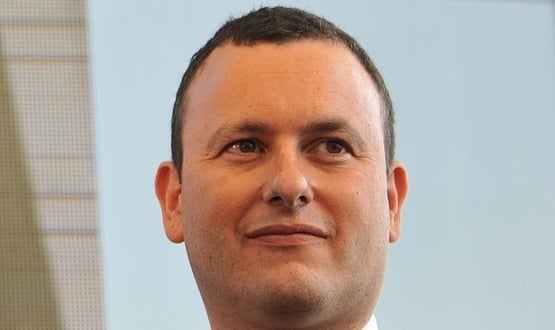Will this new openness to open source heed past lessons?
- 18 March 2019

NHSX has listed open source as one of its priorities. For Ewan Davis, there is a keen sense of déjà vu – and a desperate desire for the many lessons of the past to be heeded.
Open source seems to be back on the NHS agenda, courtesy of NHSX. The body lists one of its responsibilities as: “Making sure that all source code is open by default so that anyone who wants to write code for the NHS can see what we need.”
As a new organisation NHSX has no corporate memory and so I thought it might be helpful to share my observations on what happened last time the NHS got excited about open source.
It started when Tim Kelsey (peace be upon him) – then NHS England national director for patients and information – went on a trip to the USA. He saw the open source EHR VistA operating in the US Veterans Administration, decided it would be good for the NHS, and wrote it into Tech Fund 1 like Brighton through a stick of rock.
I got involved, working for NHS England with guys from World VistA and OSERA to establish what would be needed to localise VistA for the NHS. We came up with a plan but the cost was more than NHS England was willing to pay. NHS VistA was doomed.
Our work did lead to the creation of an open source programme within NHS England, though, which rapidly absorbed and refactored Tim’s next idea: Code4Health.
We set out to demonstrate how open source could work in the NHS for both vendors and users, and to dispel many of the myths that existed about open source. We created the NHS Open Source Foundation (now The Apperta Foundation), a not-for-profit designed to act as a custodian for quality assured NHS open source software, adapting the model developed by OSERA in the US for VistA.
We identified a number of issues which we worked hard to address.
- A concern that open source software could not be safe and secure. Here we were able to convince people that, with our custodian model and the ability for anyone to inspect source code, the opposite was true.
- A failure to understand how NHS organisations could “procure” open source software. Despite excellent guidance from the Cabinet Office, this is something that many NHS organisations still don’t understand.
- A failure to understand that open source software was “free as in air” not “free as in beer” and that successful open source projects need someone to pay professional developers to create and maintain it. Tim’s original concept for Code4Health – to “teach 50,000 clinicians to code” – was not helpful here. This remains an issue and one I believe NHSX will need to address.
- Vendors struggling to find economically sustainable business models based on open source software. This is the core problem that the NHS could fix, but hasn’t. Could NHSX finally crack it?
- Confusion from both vendors and customers on how intellectual property rights and software licences operate in an open source project. This is a complex area where we were available to offer expert advice to help vendors understand the options and access to tools to help ensure licence compliance.
We had some successes – among them persuading IMS Maxims to open source their EHR and Marand to do the same for their electronic prescribing systems, now OPENep. We were also able to provide support to some existing open source projects, notably openEyes, Open-eObs and the Ripple Foundation’s open source openEHR stack. And we were able to create a number of Code4Health communities who are working on new open source projects.
Some issues remain
The whole of the team running the open source programme and Code4Health are being made redundant by NHS Digital at the end of March. But since the Apperta Foundation was created as a free standing entity, we can hope their work will live on.
So what are the challenges NHSX is going to face if it truly wants to see open source software as a significant part of the NHS’s digital landscape?
Firstly, it is important to understand that open source is primarily about getting better software, not cheaper software. Although an open source approach will eliminate profiteering by vendors, software development and maintenance still needs to be funded.
And so NHSX needs to create an environment in which economically sustainable business models can be created for open source software. There are many possible such models, but the central issue is persuading NHS organisations to contribute to open source projects that deliver value to them. In the short term some significant pump-priming of open source projects by the centre is going to be required.
Finally, NHSX need to give teeth to its commitment on open source. That could mean requiring business cases demonstrate open source options have been properly considered, and proof that proprietary systems are only procured when there is no better open source alternative.
Will it happen this time? My heart hopes it does but my head says it probably won’t. My plea: please, NHSX, make sure you learn from the work that’s gone before.
Ewan Davis is a digital health strategist, chief executive of inidus and a non-executive director at Digital Health





10 Comments
Ewan- thanks for your timely words. Not quite sure what NHSX will do- but I can report (from the coal face of deployment) that OpenEyes is going from strength to strength. We have robust clinical and development in place and are now looking at deployments within and outside of the UK. Open source is hard to explain – and seemingly confused with open data. We have recently deployed in Matt Hancock’s constituency (West Suffolk) which seems a little ironic. The support from Apperta and Peter Coates (and team) has been great and to coin a popular term is solid. . Regards James
Sad to hear about Code4Health.
From a developer point of view, open source tends to mean something different to me. It’s not large systems (thats business open source) but much smaller ones and this includes tooling. Our main health related tooling is the HAPI tools from UHN in Canada (it will no doubt be used by several hacks at the rewired event next week). I’m pretty sure this will continue BUT the NHS needs to do the right thing and give something back (i.e. contribute to the code).
I’m sure developers would contribute by default but we need support from the business (the NHS and commercial). We don’t want to get bogged down in discussions about who will pay for it or how we sell it, we just want to do the right thing for the NHS (and worldwide community).
We probably have many more projects where developers would share and work together to reduce costs. NHS Digital have started doing this and much of the work is now open source as default, how about trusts & suppliers starting to share their code?
A whole lot of hard-won wisdom here, that it would be nice to think will be listened to by those shaping up NHSx and similar cunning plans.
To echo Tony’s comment above and the main thrust of Ewan’s article — open platforms clearly make perfect sense, even if just starting out as a series of hedge bets, but you’ve got to invest some money to build capacity, capability and knowledge across the system.
A true test of NHSx and Matt Hancock’s intent will be whether real investment is channeled into these areas rather than trying to build some sort of MVP next-gen NHS App. Greenfield dev may be fun fast but NHS IT has lots of very brown problems.
Those pushing proprietary software (and data) are basically engaging in Government-sanctioned rent-seeking behavior and their strategy is to generate misinformation on free / open source software for the consumption of those who don’t understand the information technology.
It is positive to learn that the NHS are delivering new initiatives to drive Open Source. OpenUK present the case for an Open approach for the NHS in thier 2018 paper here: https://openuk.uk/wp-content/uploads/2018/11/An-Open-Digital-Approach-for-the-NHS-Part-one-Policies-Principles-Practices-1.0-PUBLISHED.pdf
The paper summarises that Open Source is a critical factor, but the whole approach must be open and collaborative to avoid repeating past mistakes and this includes everything from engagement to design and implementation.
A barrier is the corporate ‘scar tissue’ and subsequent procurement culture that has developed as a result, following decades of digital exploitation.
Apperta provide a mitigation to this and so far seem to have the only practical and credible mechanism – lets hope that NHSx embrace this and don’t try to invent a less-round wheel.
For understanding one of the areas Apperta have built trust in the open source software supply chain is by adoption best practices such as OpenChain. See:
https://www.openchainproject.org/news/2019/03/01/collaboration-is-key-for-open-source-compliance-at-nhs
https://www.openchainproject.org/news/2018/12/06/openchain-welcomes-interneuron-to-our-community-of-conformance
A very interesting read. Another big opportunity for supporting open source is tapping into the energy and creativity of some brilliant clinical advocates. I was lucky to hear from some talented and enthusiastic GPs last week organised by our friends at mHabitat which showcased their ideas and passion to pursue this route.
Great article Ewan, and it was inspiring to be part of. I think the ongoing deployments of OpenEyes and OpenEP shows that actually this was always going to be a long burn. The other challenge was around the ability for mulitple 3rd parties to access readable and usable code as some of the technologies that were open-sourced were based on old code bases and weren’t economically viable to skill up to and maintain.
For me, I think the promotion of the OpenEHR standard was by far its biggest achievement.
For background reading on open source see my summary of Eric Raymond’s classic book “The Cathedral and the Bazaar”: https://hijournal.bcs.org/index.php/jhi/article/view/866/900
Polite reminder to readers of our “1 Percent” Open Digital Platform Challenge Fund;
https://ripple.foundation/2017/01/open-digital-platform-challenge-fund/
which received 48 open innovation exemplar bids from across the UK and Ireland, totaling more than £60m as reported by Digital Health here;
https://www.digitalhealth.net/2017/03/48-bids-open-digital-platform-challenge-fund/
Credit should go to the leadership of Leeds City Council and Yorkshire & Humber LHCRE who have continued to lead on the development of open source , open platform technology, in the form of their Helm PHR push and System of Systems architecture.
Also kudos to David Stables and the Endeavour/Discovery Data Service team who have also made great progress with open source technology in NHS settings..
So the movement continues.. as Ewans says we hope NHSX now want to do this properly & look forward to their leadership in this area..
regards
Tony
Comments are closed.